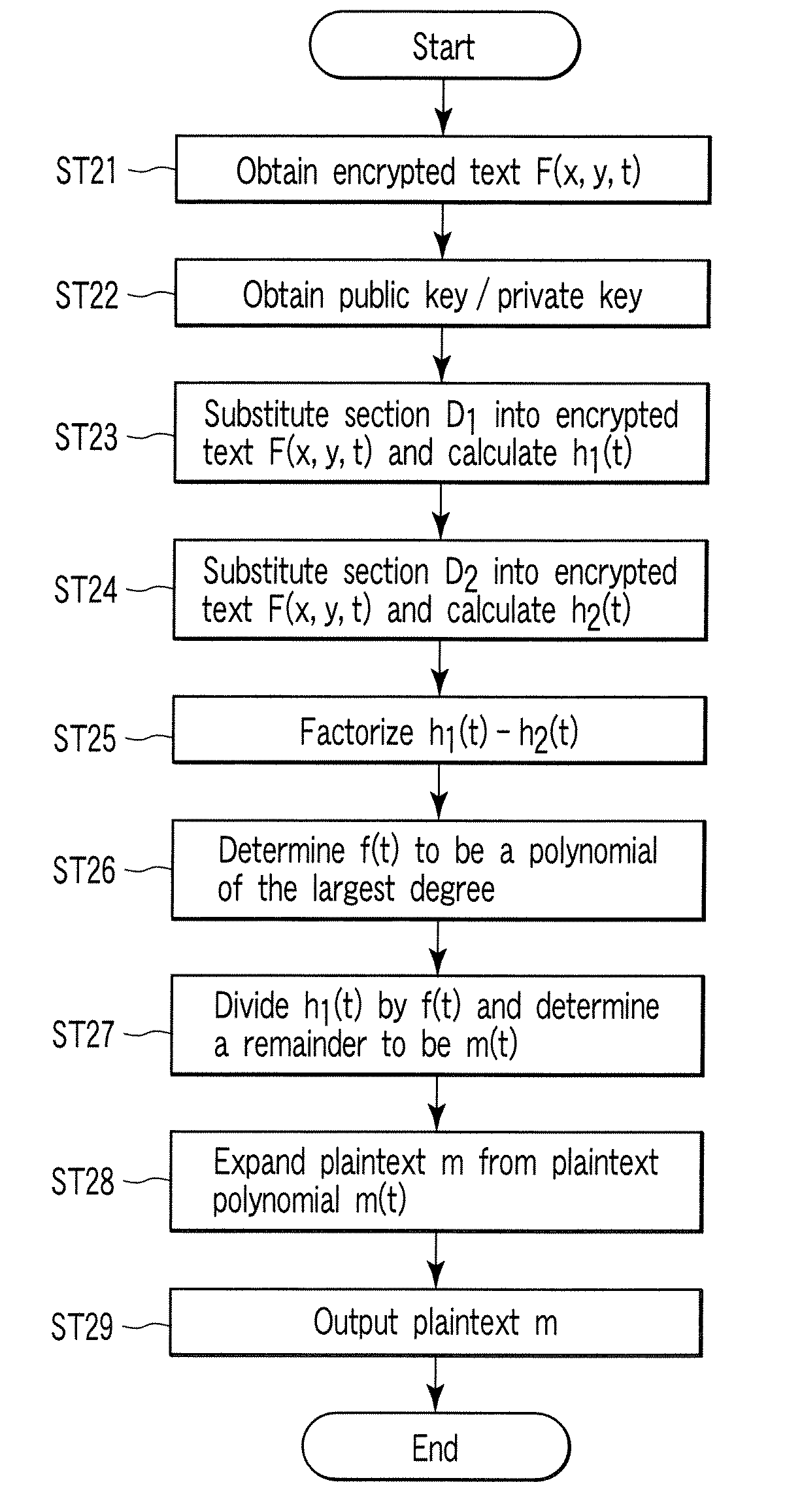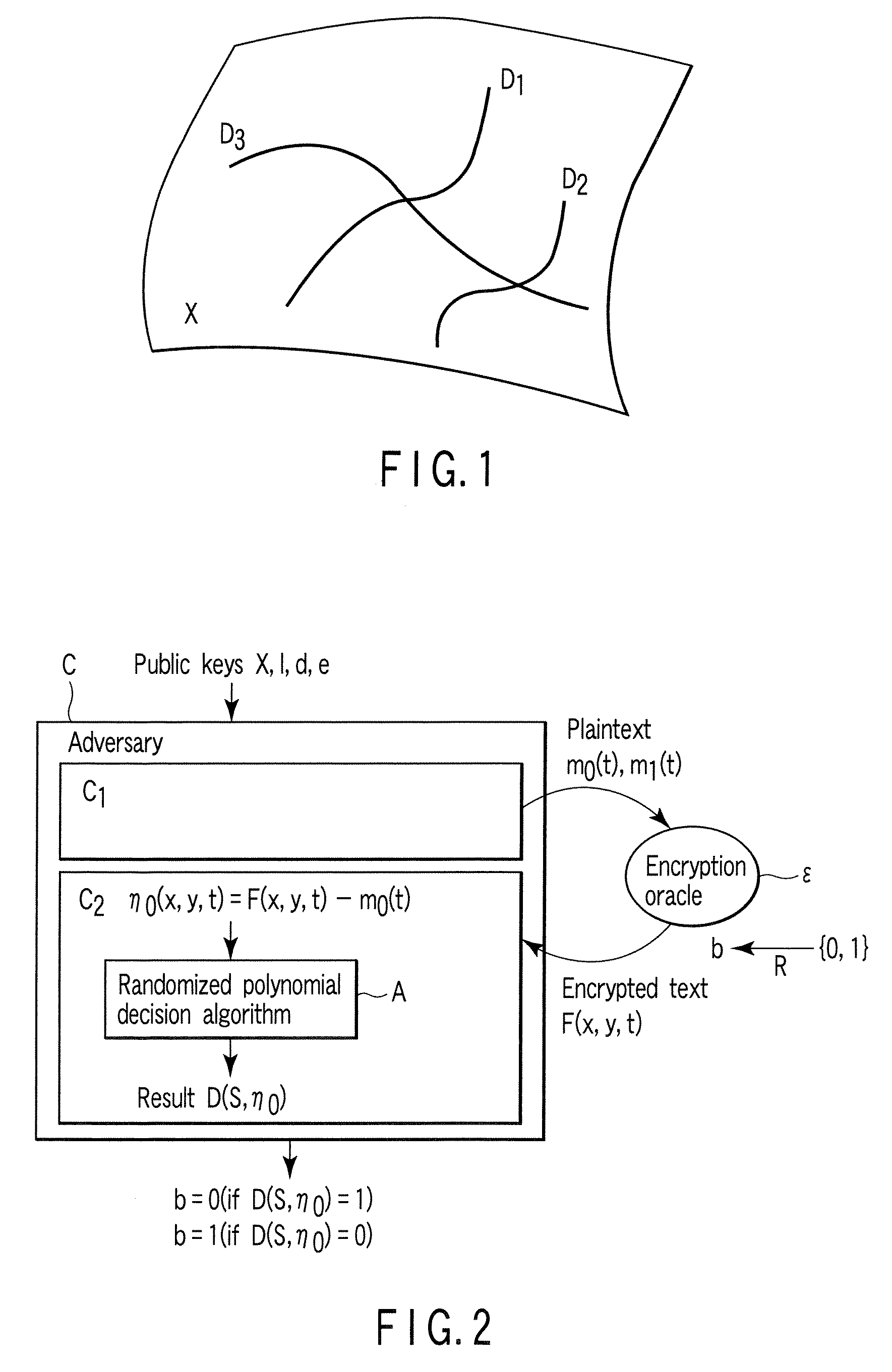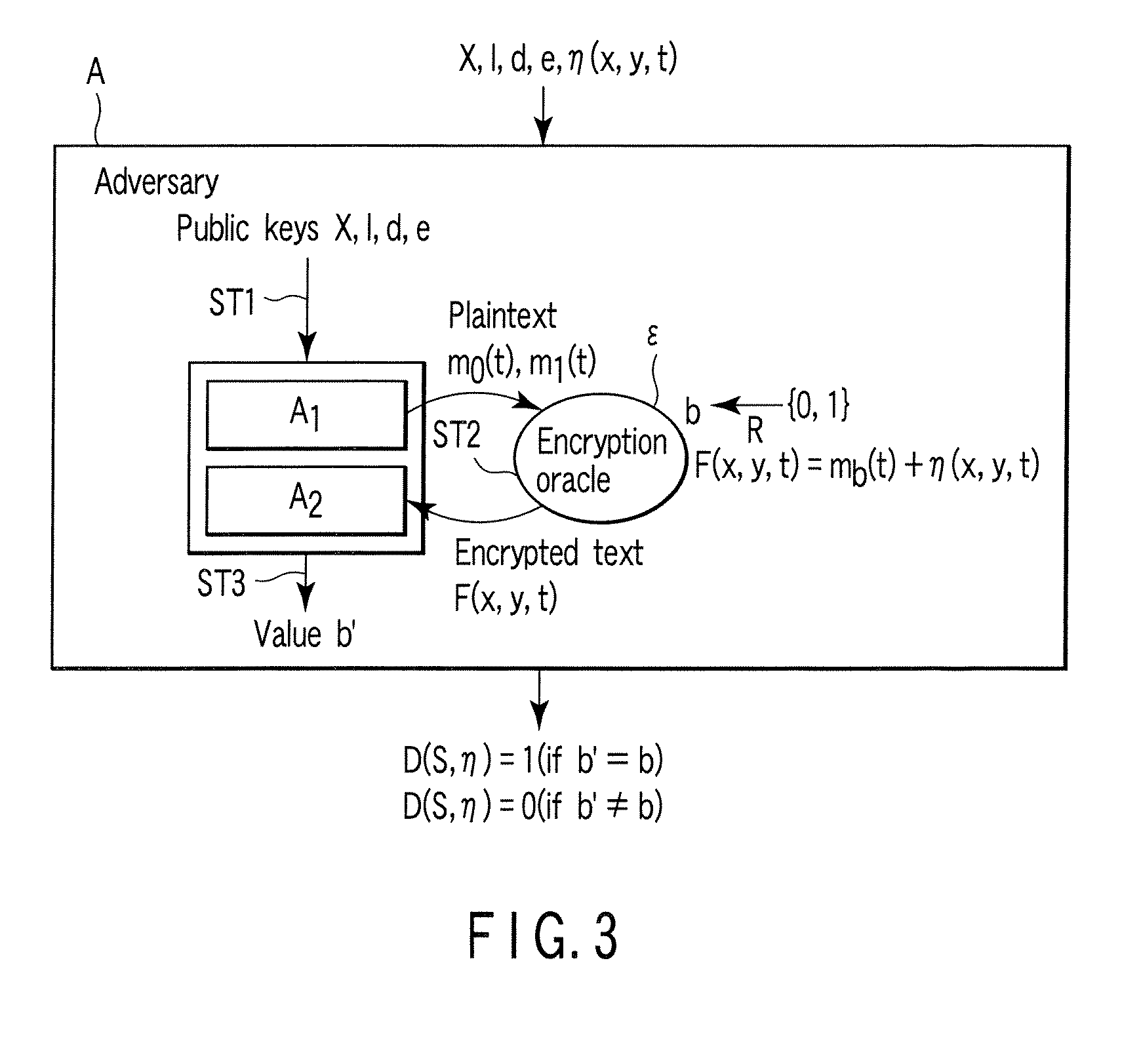Encryption apparatus, decryption apparatus, and method
a technology applied in the field of encryption apparatus and decryption apparatus, can solve the problems of unsuitable online site secret-key cryptography, viewed with suspicion, and its security is questionabl
- Summary
- Abstract
- Description
- Claims
- Application Information
AI Technical Summary
Benefits of technology
Problems solved by technology
Method used
Image
Examples
first embodiment
General Description
[0078]Public keys in a first embodiment of the present invention are the following five:
[0079]1. Characteristic p of a prime field
[0080]2. Fibration of an algebraic surface on Fp: X(x, y, t)=0
[0081]3. Degree l of one-variable irreducible polynomial f(t) on Fp
where degtX(x,y,t)l (3-0)
[0082]4. The maximum degree d of polynomials ux(t), uy(t), vx(t), vy(t) in a section (serving as a private key)
[0083]5. The highest exponent e of x, y of three-variable polynomial p(x, y, t)
[0084]Private keys are the following two sections D1 and D2:
[0085]1. Section of algebraic surface X on Fp: D1: (x, y, t)=(ux(t), uy(t),t)
[0086]2. Section of algebraic surface X on Fp: D2: (x, y, t)=(vx(t), vy(t),t)
[0087]These can be determined easily by a method described later (or a key generating method).
[0088]Next, the outline of an encrypting process will be described. In an encrypting process, a message to be encrypted (hereinafter, referred to as plaintext) is block-split as follows:
m=m0∥m1∥...
second embodiment
[0259]Next, a second embodiment of the present invention will be explained. The public keys and private keys in the second embodiment are the same as those in the first embodiment. Public-key cryptography of the second embodiment assures higher security than that of the first embodiment which assures security (IND-CPA) against passive attack. Specifically, public-key cryptography of the second embodiment assures security (IND-CCA) even against active attack.
[0260]Public-key cryptography of the first embodiment guarantees security in terms of IND-CPA. In contrast, the second embodiment configures secure public-key cryptography in terms of IND-CCA by using the conversion described in Jpn. Pat. No. 3306384.
[0261]The technical content written in Jpn. Pat. No. 3306384 will be explained briefly. When there is public-key cryptography Π (K, E, D) including secure random elements in terms of IND-CPA, this is converted into public-key cryptography Π(K, Ē, D) including random elements, thereby...
PUM
 Login to View More
Login to View More Abstract
Description
Claims
Application Information
 Login to View More
Login to View More - R&D
- Intellectual Property
- Life Sciences
- Materials
- Tech Scout
- Unparalleled Data Quality
- Higher Quality Content
- 60% Fewer Hallucinations
Browse by: Latest US Patents, China's latest patents, Technical Efficacy Thesaurus, Application Domain, Technology Topic, Popular Technical Reports.
© 2025 PatSnap. All rights reserved.Legal|Privacy policy|Modern Slavery Act Transparency Statement|Sitemap|About US| Contact US: help@patsnap.com



